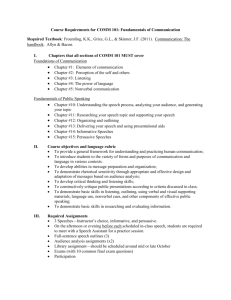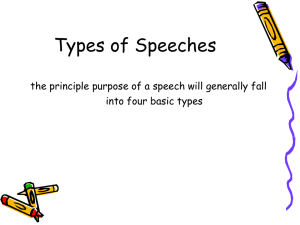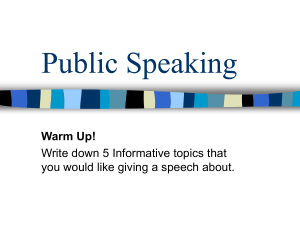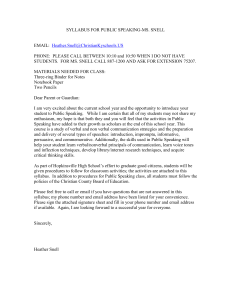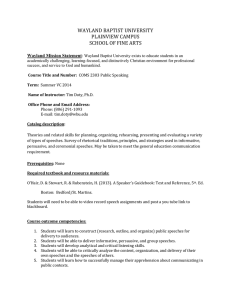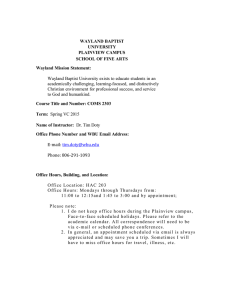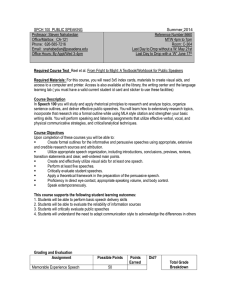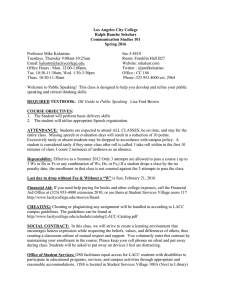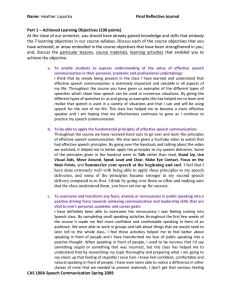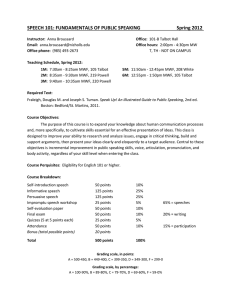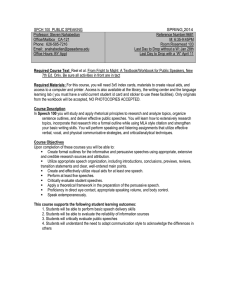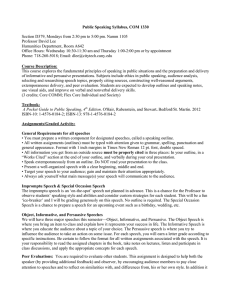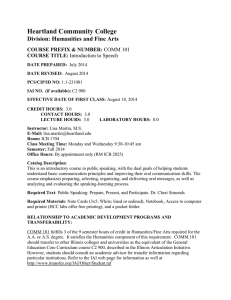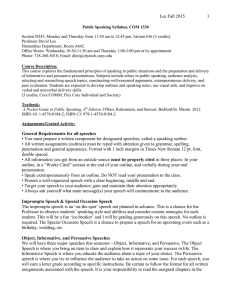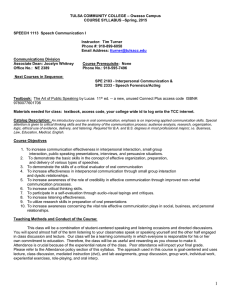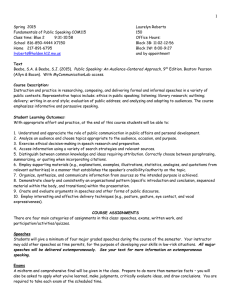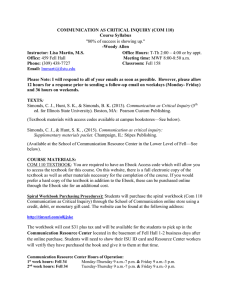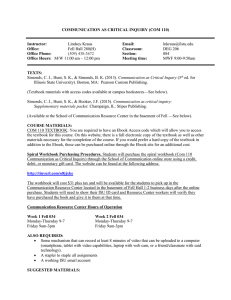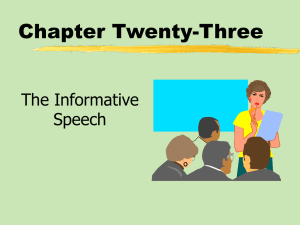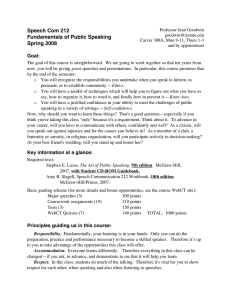Speech Fundamentals - Matt's Media Research
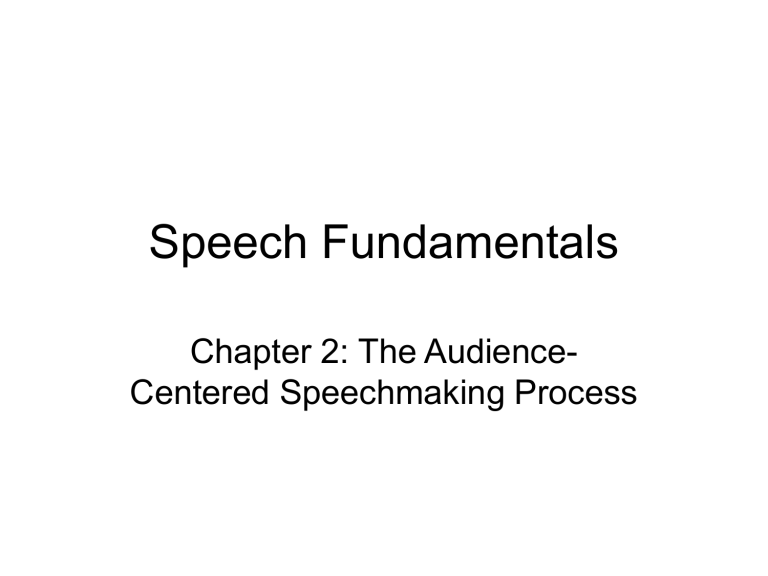
Speech Fundamentals
Chapter 2: The Audience-
Centered Speechmaking Process
Consider Your Audience
• Audience-centered speechmaking begins with knowing your audience. Some important things to know are:
– Age
– Gender
– Economic Class
– Ethnicity
– Values
– Goals
Selecting a Topic
• Speech Topic: The key focus of the content of a speech.
• To help find a topic, one may ask several questions:
– Who is my audience?
– What are my areas of knowledge or skill?
– What is the occasion?
Finding Your Purposes
• General Purpose: There are three broad purposes that categorize nearly every speech
– Informative
– Persuasive
– Entertaining
Finding Your Purposes
• Specific Purpose: Examples of a specific purpose may include (1) the desired learning outcome of an informative speech, (2) the desired change in belief/behavior of a persuasive speech, or
(3) the desired reactions (e.g. laughter) of an entertaining speech.
Finding Your Purposes
• General Purpose: The overarching goal of a speech – to inform, persuade, or entertain.
• Specific Purpose: A concise statement of the desired audience response, indicating what you want your listeners to remember, feel, or do when you finish speaking.
Central Idea?
• Central Idea: A one-sentence summary of the speech content.
• If your purposes are what you want to accomplish with your speech, the central idea is the speech itself – a summary of the manifest content.
Main Ideas
• The key points to a speech.
• Main ideas serve the central idea. You develop main ideas by conidering your central idea .
Main Ideas
• There are three specific ways to develop main ideas through looking at your central idea .
– Logical divisions in the central idea.
– Reasons the central idea is true.
– Can you demonstrate the central idea through a series of steps ?
Main Ideas
• Certain speech purposes lend themselves well to specific strategies for developing main ideas.
– Informative speeches often have logical divisions (e.g. central idea = “The water cycle operates in four stages.” The four stages represent each of the main ideas.)
Main Ideas
• A “reasons” approach is often used in persuasive speeches (e.g. “There are three main reasons why we must increase the minimum wage.”)
• A “series of steps” approach is often used in informative or narrative speeches (e.g.
“These are the steps that have lead to global warming.”)
Supporting Material
• Supporting material includes evidence that has been obtained through research.
Good researchers use general search engines (e.g. Yahoo!, Google, Ask) only to gain initial information about a topic. This should be followed up by more formal research using library databases such as
Lexis Nexis .
Supporting Material
• When using supporting material, raw data in the form of statistics must be made relevant to the lives and experiences of listeners. A good speaker is an expert who knows how to tell a good story.
Visual Aids
• Effective speeches often make use of visual aids, including:
– Objects
– Posters
– PowerPoint Slides
Outline
• All effective speeches use an outline!
• Outlines should be divided into an
Introduction, Body, and Conclusion.
• The body of the speech should be outlined before the introduction and conclusion.
• The body of the speech can be organized in a number of ways.
Outline
• Organizing the body of the speech
– Chronological
– Topical
– Cause/Effect
– Problem/Solution
• Go to pages 34-35 of the textbook and look at the sample outline.
Rehearsal
• All good speeches require rehearsal.
There is a definite correlation between the effectiveness of a speech and the amount of time spent practicing.


